Growing up, Marilyn Curran Ryan remembers being strictly forbidden from opening the drawers of her father’s secretary desk in the living room of their South Omaha, Nebraska, home. That’s where Union Pacific engineer James Curran kept his blueprints and drawings, including the plans for a very special project that had almost nothing to do with rail lines or bridges: The world’s first ski chairlift.
A chairlift may seem like an unlikely project for a railroad company, but, in the 1930s, Union Pacific developed the first destination ski resort in the United States. Inspired by European ski resorts, the railroad’s top boss, Averell Harriman, ventured that building a resort-style ski area in the United States would help boost passenger rail travel. Sure enough, high-end vacationers flocked to Sun Valley Resort in Ketchum, Idaho, when it opened in December 1936, with the world’s first chairlifts.
“Skiing is such a big thing now all over, but it probably wouldn’t have been if it wasn’t for, first of all, Harriman, but also for Dad’s invention that made it so easy,” says Ryan, now 89, one of Curran’s three surviving daughters. Curran’s son, Jimmy, died in December.
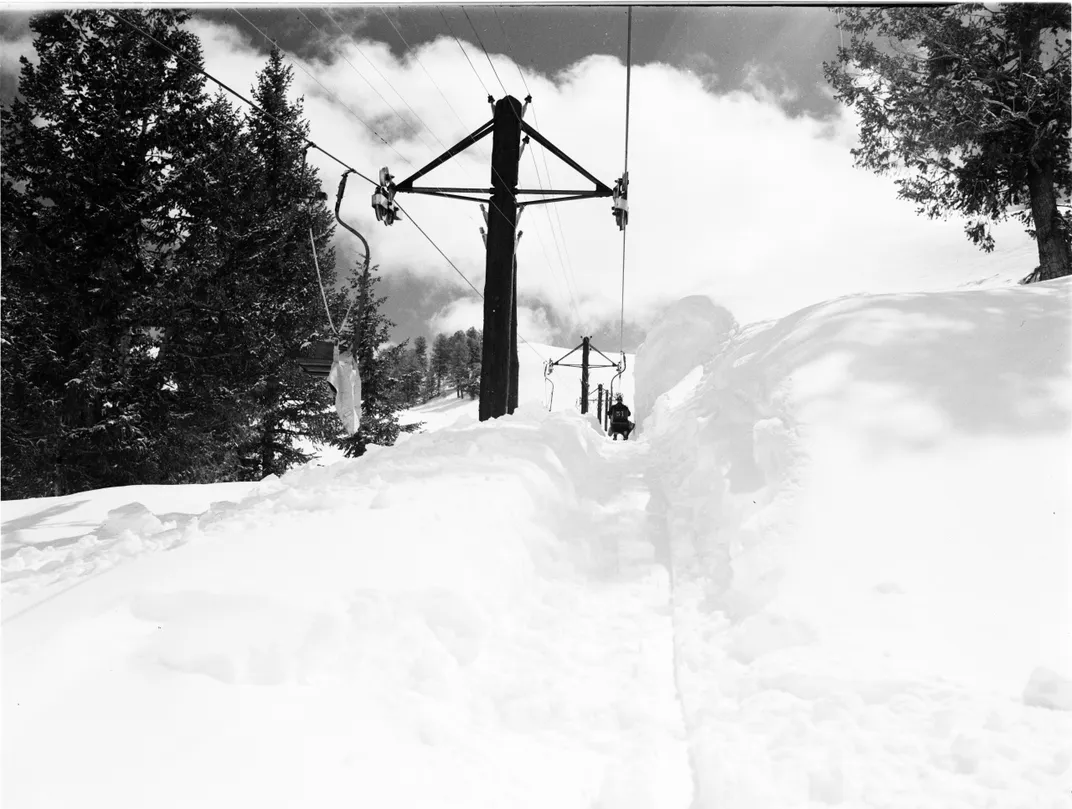
Today’s skiers and snowboarders may take for granted how easy it is to travel hundreds or thousands of vertical feet in just a few minutes thanks to open-air chairlifts, enclosed gondolas and trams, the modern successors of Curran’s early design. But without this historic pre-World War II technology, skiing would likely still be a niche sport pursued primarily by adventurous mountaineers.
“Lifts, in general, made alpine skiing possible on a larger scale,” says Seth Masia, president of the International Skiing History Association, a nonprofit increasing awareness of the sport’s heritage. “[The invention] popularized skiing among people who didn’t have the physical stamina to climb long distances at high altitudes. It opened it up to casual skiers who didn’t live in ski towns. It opened skiing up to tourism.”
Building Sun Valley
The first U.S. ski area opened in 1915 in Steamboat Springs, Colorado, followed by nearly 20 others throughout New England, the Pacific Northwest and California. But what set Sun Valley apart when it opened in 1936 was its all-inclusive nature—visitors could not only ski, but they could also spend the night in the upscale lodge, sample fine-dining, take ski lessons, swim and participate in other activities—and its national marketing campaign to attract skiers from across the country. Prior to that, skiers primarily visited local no-frills ski areas or may have traveled short distances by train.
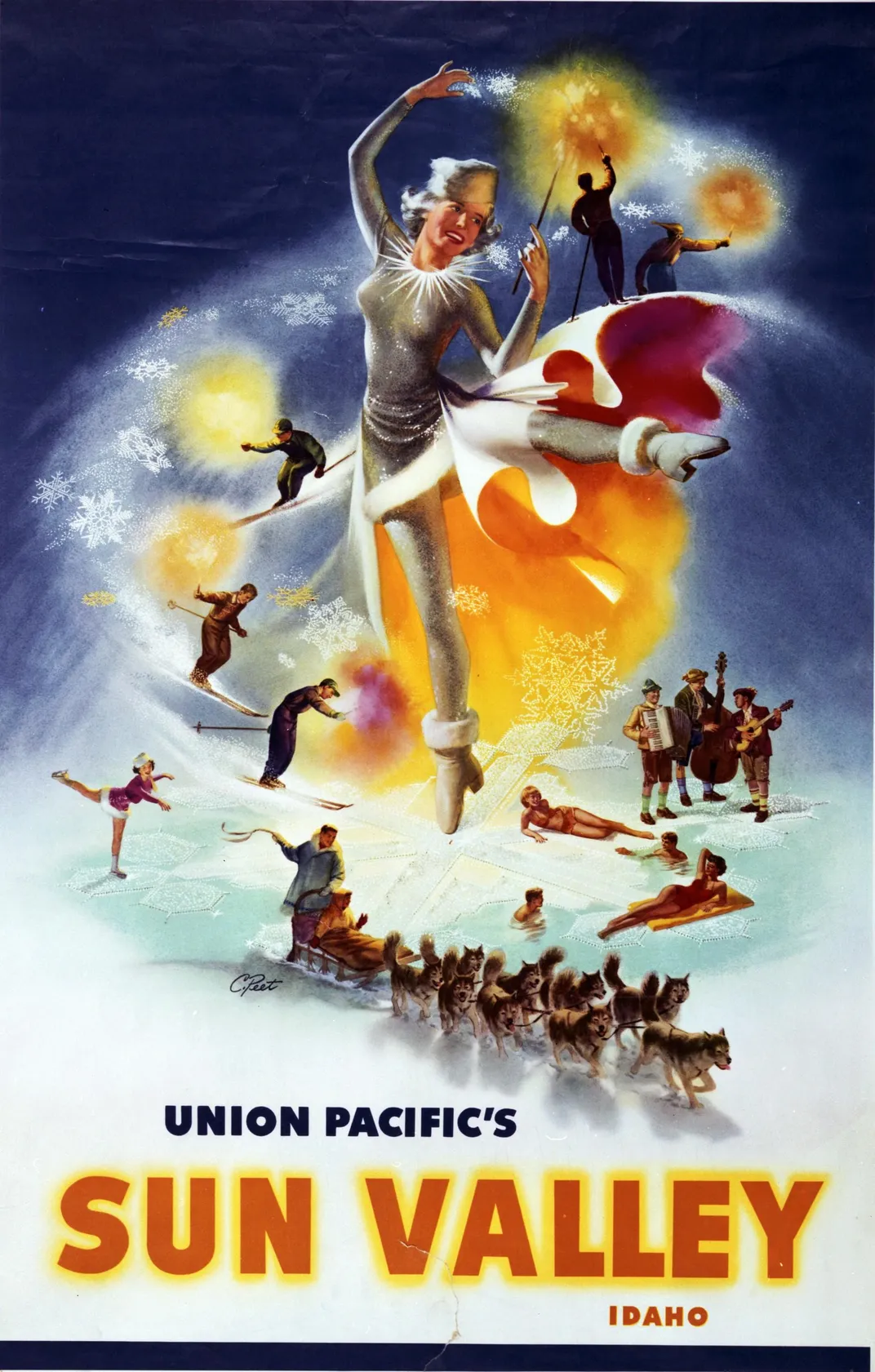
Before the chairlift, skiers relied on other means of gaining elevation, both mechanical and human-powered. In the early days, skiers hopped aboard trains and jumped off on high mountain passes or they simply hiked uphill. In some areas, horse-drawn sleds transported skiers up carriage roads, Masia says.
According to the association, German farmer and innkeeper Robert Winterhalder invented the world’s first overhead cable tow in 1906—skiers hooked handles onto the water-powered continuous cable above their heads, then glided uphill on their skis. Though it was easy to use, Winterhalder’s invention didn’t catch on elsewhere.
In America, the first surface lift—the umbrella designation for uphill transportation that keeps a skier’s skis on the ground—was a steam-powered toboggan tow built in Truckee, California, in 1910 and later adopted by skiers.
Canadian skier Alex Foster built the first working model of the rope tow—a continuous rope that skiers simply grabbed onto and held with their hands—in 1931 outside of Shawbridge, Quebec. By 1934, the tow rope technology had made its way to Woodstock, Vermont.
Meanwhile, in Europe, Swiss ski mountaineer and mechanical engineer Ernst Constam invented the world’s first J-bar in 1934 in Switzerland, followed by the two-passenger T-bar in 1935. Both technologies quickly caught on across Europe and the U.S.
The push to invent a new, even more effortless mechanical skier transportation system started in 1935 with Union Pacific’s plan to build a ski resort. But first, the railroad had to decide where to build its proposed winter playground. Harriman recruited an Austrian count named Felix Schaffgotsch to search the American West for the perfect spot, according to Ketchum’s public library and regional history museum.
After unsuccessful searches in Washington, California and Utah, Schaffgotsch had almost given up when he arrived in the Wood River Valley of southern Idaho in early January 1936. He spent a few days in the quiet ranching and mining community of Ketchum, before wiring Harriman that this was the place. “It contains more delightful features for a winter sports center than any other place I have seen in the United States, Switzerland or Austria,” Schaffgotsch wrote, according to the City of Sun Valley.
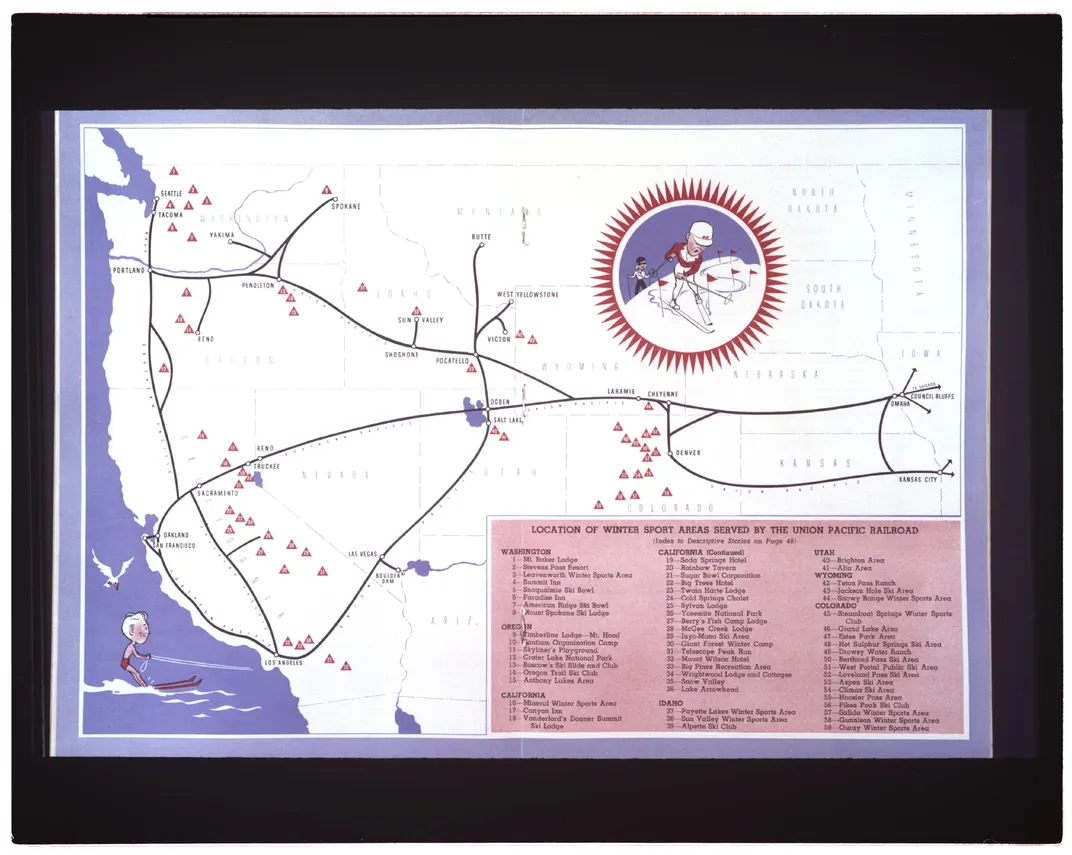
Harriman didn’t waste any time. He arranged for the railroad to purchase a 3,388-acre ranch in Ketchum (for about $4 per acre) and directed crews to start building the resort, with the glamorous, 220-room X-shaped Sun Valley Lodge as its centerpiece.
Meanwhile, at Union Pacific headquarters in Omaha, engineers—including Curran—were hard at work trying to address what Harriman saw as one of skiing’s biggest barriers to entry: Getting skiers up the mountain quickly, safely and easily.
“[(Local skiers]) had skins [strips that attach to the bottom of skis to help grip the snow and prevent skiers from sliding back downhill] and they would hike up,” says Mary Tyson, regional history director at The Community Library in Ketchum. “They would also groom the mountain themselves with skis. It was a lot of backcountry mentality. It was hiking up and skiing down—that’s what people were used to doing.”
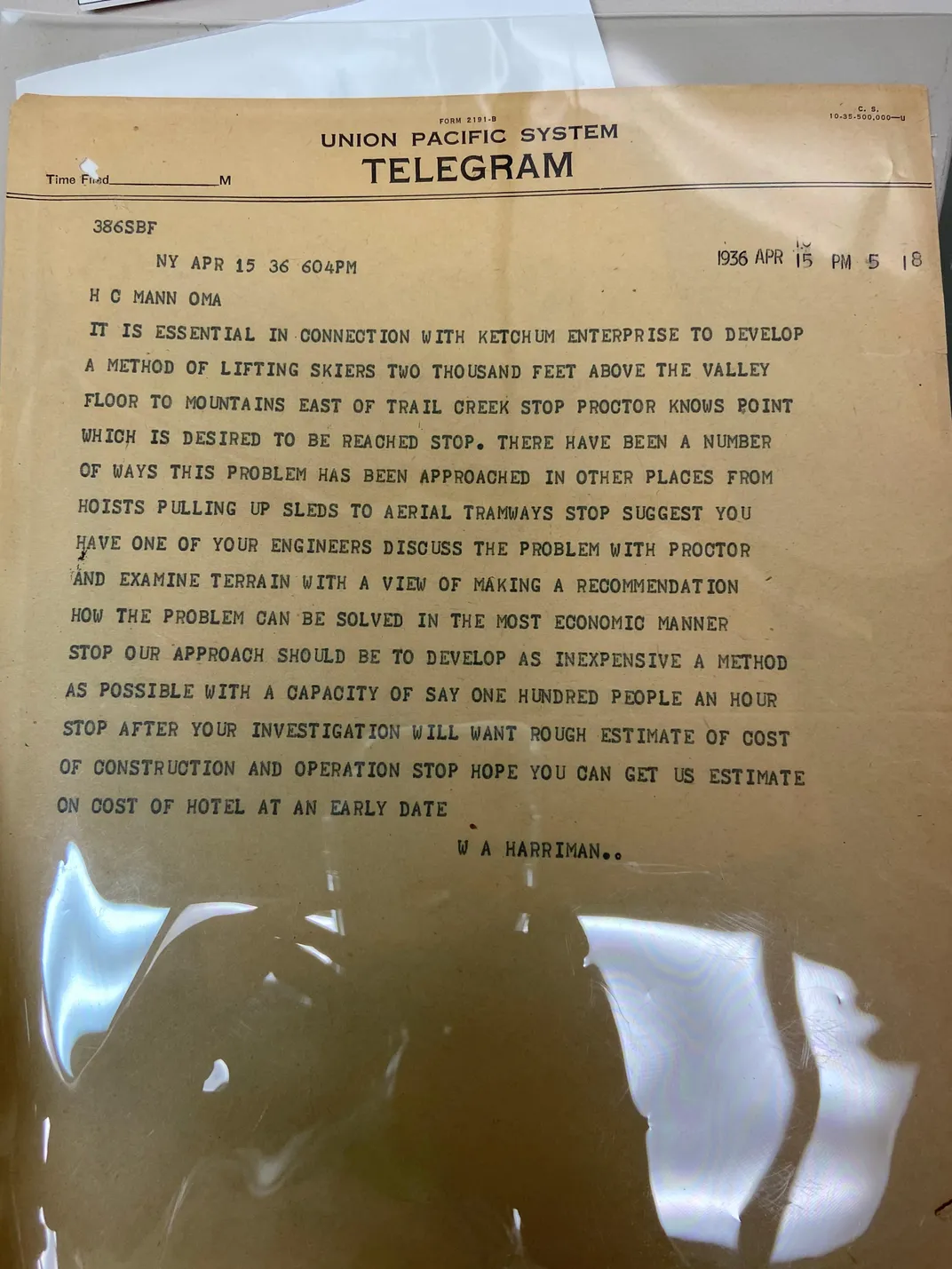
To attract the wealthy railway clientele he desired, Harriman believed he needed to make skiing easier and more comfortable. According to a telegram he sent to Union Pacific chief engineer H.C. Mann, Harriman challenged the railroad’s bright engineers to invent a device that could lift skiers “two thousand feet above the valley floor” with “a capacity of say one hundred people an hour.” The new resort, built in just seven months for $1.5 million, also featured heated outdoor swimming pools, an ice skating rink, fine dining restaurants and many other high-end amenities meant to wow guests. Harriman also invited Hollywood celebrities to visit the resort, free of charge, to help boost its reputation.
Curran, a 33-year-old licensed engineer and Nebraska native who had been working for Union Pacific since 1927, first as a draftsman and later as a bridge engineer, got to work on a solution. For his invention, Curran drew inspiration from conveyor belts used to load bananas onto ships in Central America.
“He said, ‘I wonder, they can do that with bananas, why can’t we hook a chair to a conveyor belt and get people up the mountain,’” Ryan says.
Curran—who had never skied and, even after inventing the chairlift, never did—drew up plans and submitted the proposal to his Union Pacific boss, who promptly laughed in his face, according to Ryan. Later, however, Curran snuck his drawings into the pile of proposals under review by the ski area’s developers. His idea caught their attention, and they gave Curran the green light to move forward with his invention.
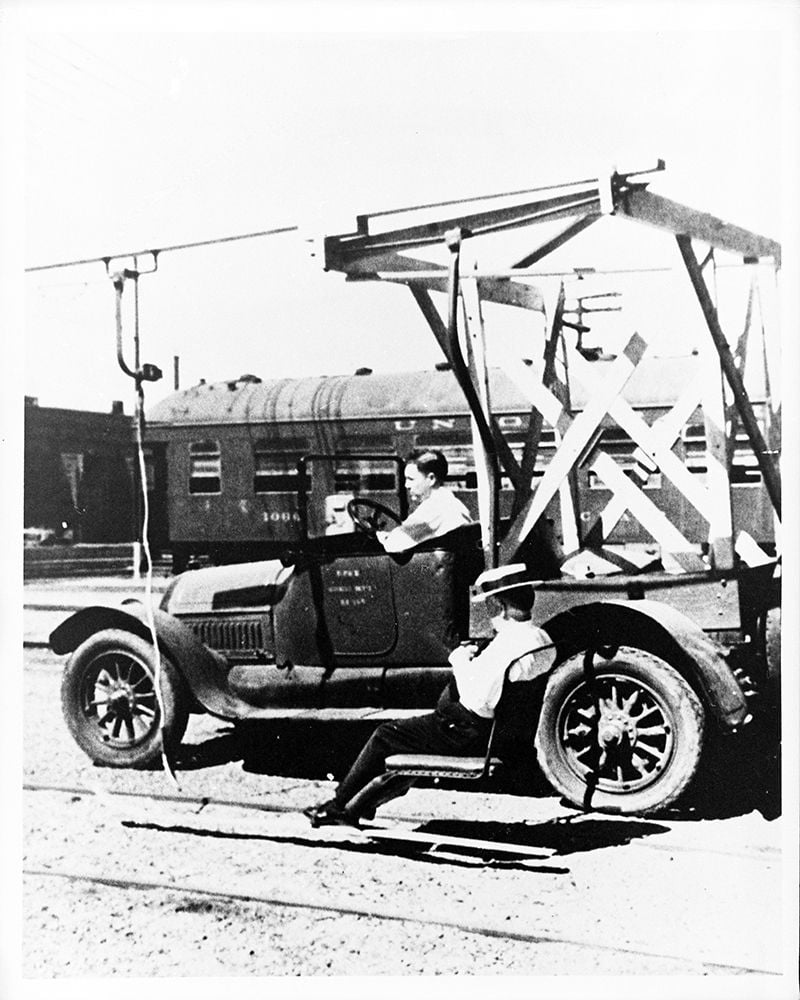
While trying to mend his relationship with his boss, Ryan says, Curran began testing early prototypes of his chairlift in the Union Pacific rail yards in Omaha. He built a tall wooden structure in the back of a vehicle, then suspended a chair off the side. While one person drove, another person sat in the chair (often wearing roller skates or skis that slid on straw placed below), assessing the speed, angle and safety of the lift design. Curran calculated the rope tensions, rope sags, driving torques and horsepower needed to operate the lift.
A photo of Curran’s rail yard testing hangs in the Sun Valley Lodge today. Ryan, along with several of her children and grandchildren, visited Sun Valley in late February 2020; it was Ryan’s second-ever visit to Sun Valley, the exciting place she had heard so much about as a child. Though she never skied, all of her children and grandchildren do. “To walk down the hall and see my dad’s picture on the wall was just so much fun,” says Ryan.
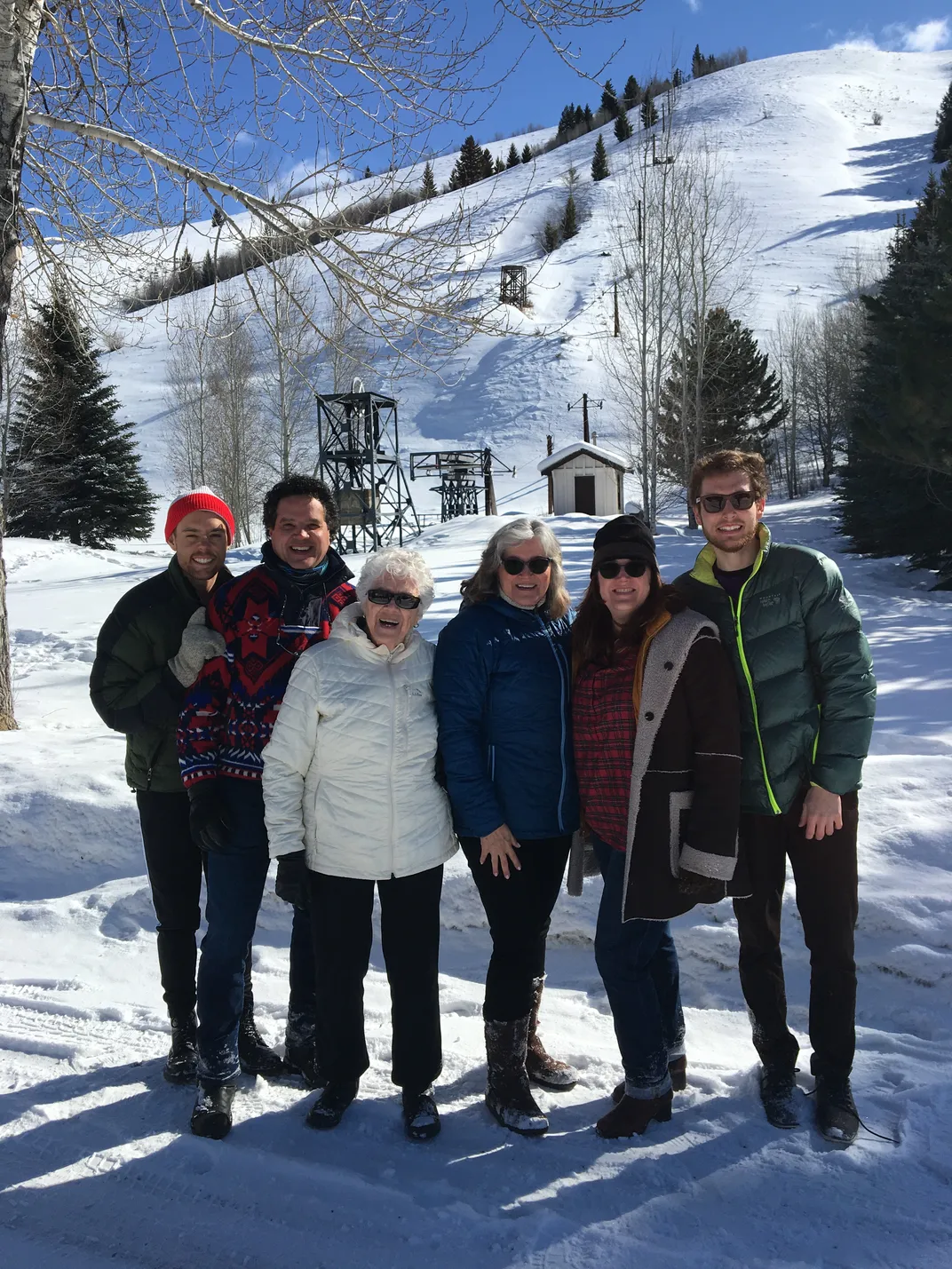
After his prototype tests in Omaha, Curran traveled by train to Ketchum to help oversee construction of the first chairlifts on Proctor and Dollar mountains at Sun Valley, which opened with the resort in December 1936. As the resort grew, Ryan remembers Curran visited Sun Valley frequently to supervise the building of other lifts. (He often brought home autographs from movie stars and Olympic ice skaters for his children, she says.)
The first lifts had wooden towers and featured single chairs that were affixed to an overhead cable, which meant they didn’t slow down when riders got on or off, according to Tim Silva, president and general manager of Sun Valley Resort. The original Proctor lift transported skiers, seated in chairs suspended 20 feet off the ground, for 3,540 feet and gained 1,150 feet in elevation, Silva says. The Dollar lift was 2,360 feet long and rose 634 feet in elevation. Between the two mountains, skiers had their pick of 17 lift-serviced ski runs.
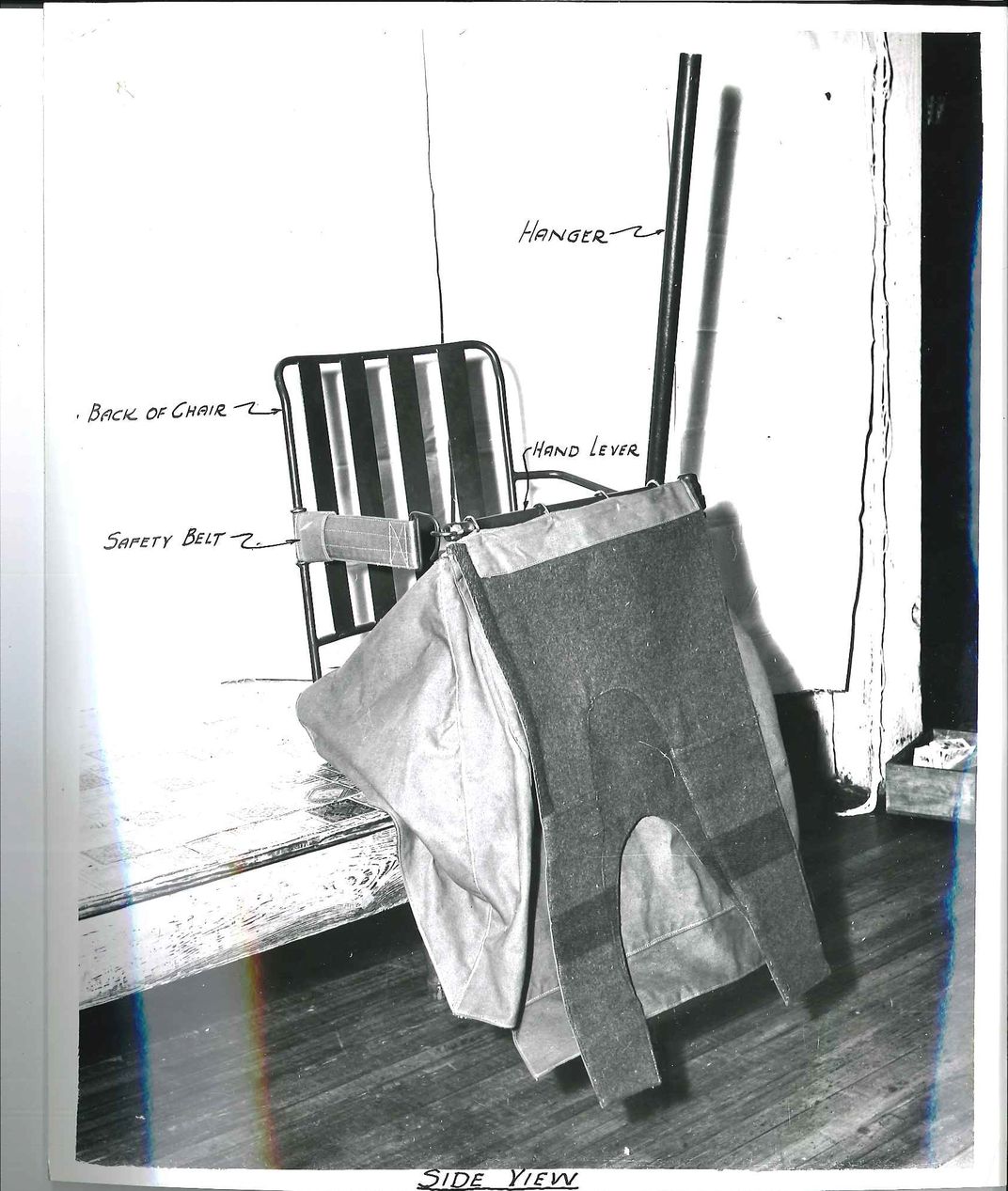
Early chairlifts, including those at Sun Valley, had blankets on every seat to keep skiers warm during the slow ride. Ski resort employees who folded these so-called “capes'' and sent them back to the bottom were rewarded with skiing privileges, according to Sun Valley’s records.
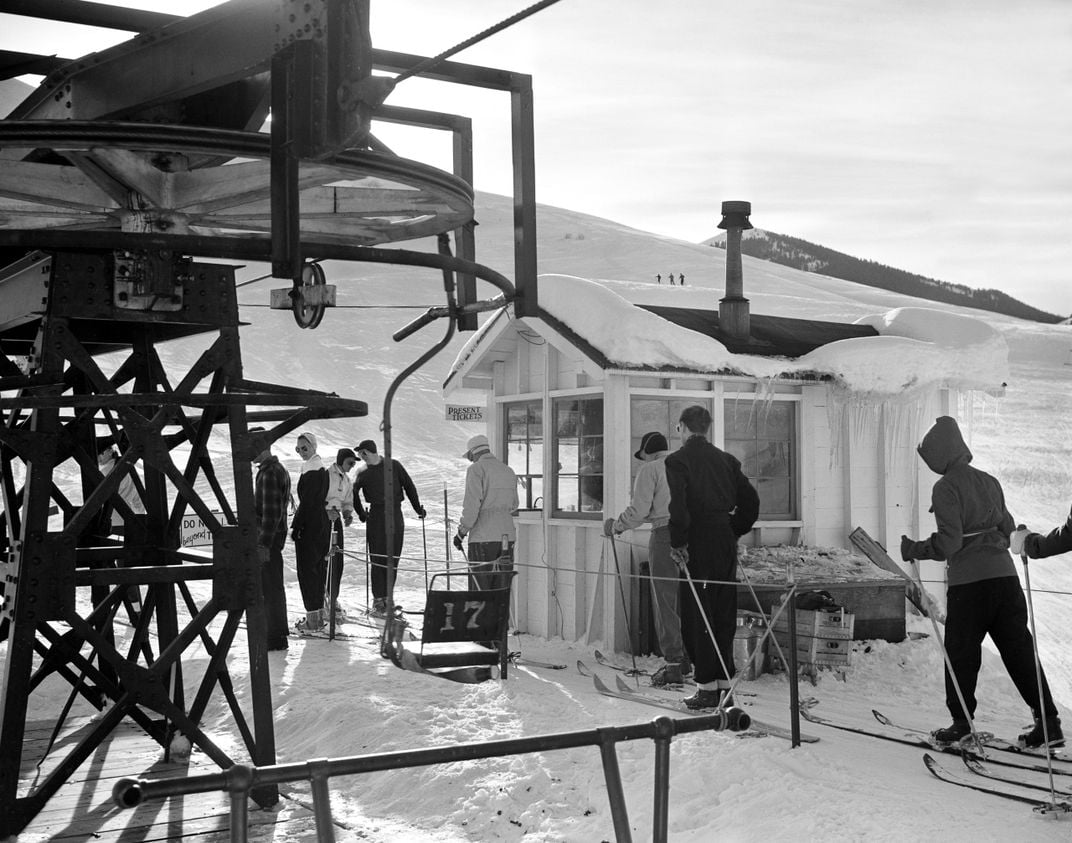
The original Proctor and Dollar lifts operated for a few seasons before Sun Valley leaders shifted their attention to the much taller Bald Mountain. There, they built three additional single-chair lifts that could help skiers climb nearly 3,400 vertical feet. The second-generation ski lifts were more sophisticated than their earlier counterparts and featured steel towers, Silva says.
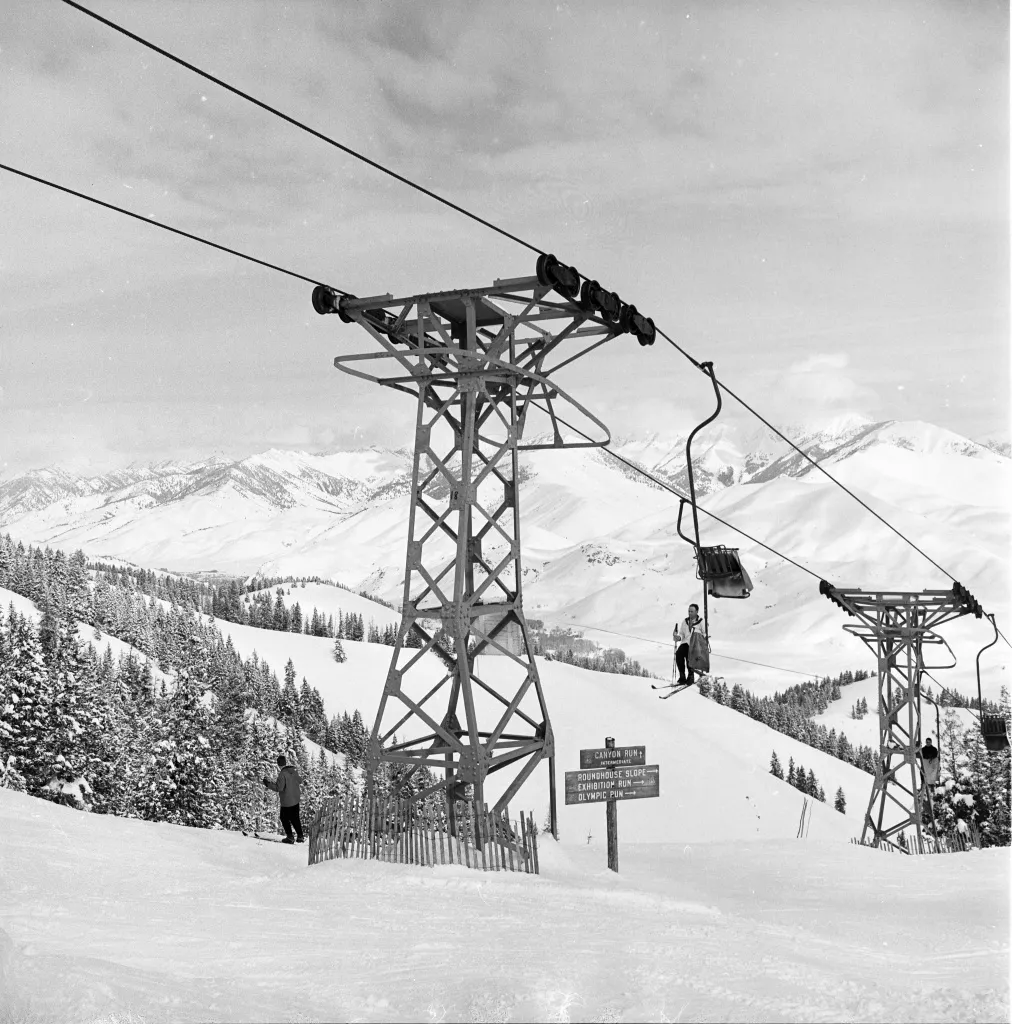
Enduring legacy
Curran and Glen Trout, the railroad’s chief bridge engineer, patented the chairlift in 1939, along with Gordon Bannerman, an assistant tramway engineer at the American Steel and Wire Company. Since American Steel helped with the chairlift’s design, built many of its components and was more likely to design chairlifts at other ski areas in the future, the two companies agreed that American Steel should own the patent, but give Union Pacific royalty-free permission to use the idea, according to Union Pacific’s records.
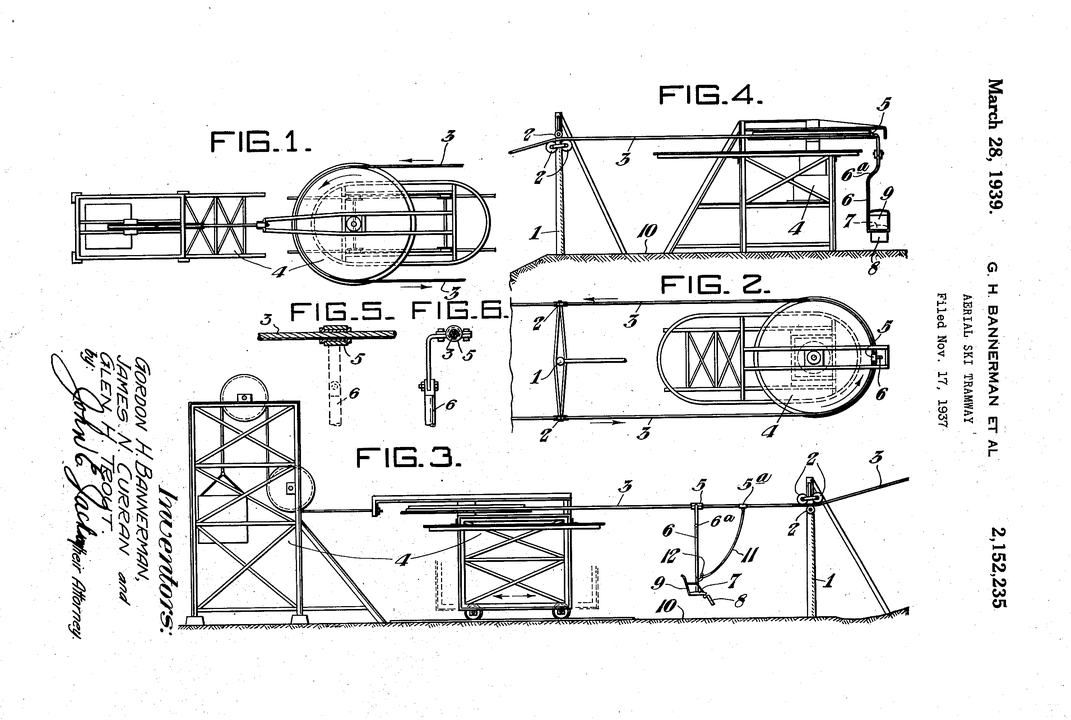
Trout wrote to Bannerman in December 1936 that “the operation of the chair line is very satisfactory, the chairs being much easier to get on or off than we anticipated...The general opinion of people who have ridden up the tram is that they will prove quite an attractive facility for the purpose intended,” according to historian John Lundin, who wrote Skiing Sun Valley: a History from Union Pacific to the Holdings.
U.S. ski areas, nonetheless, were initially slow to adopt Curran’s invention, primarily because chairlifts were so much more expensive to install and maintain than J-bars, T-bars and rope tows, according to Masia. Aspen Mountain unveiled its first lift in 1947, touting it as the world’s longest chairlift. When Squaw Valley opened with its first chairlift in 1949, it boasted the world’s longest double chairlift, Masia says. More and more ski areas installed chairlifts as the sport’s popularity grew throughout the 1950s and ‘60s.
“After the war when ski areas had more money and more investment going in, chairlifts were so much more comfortable than riding a surface lift that they really became much more popular among skiers,” Masia says.
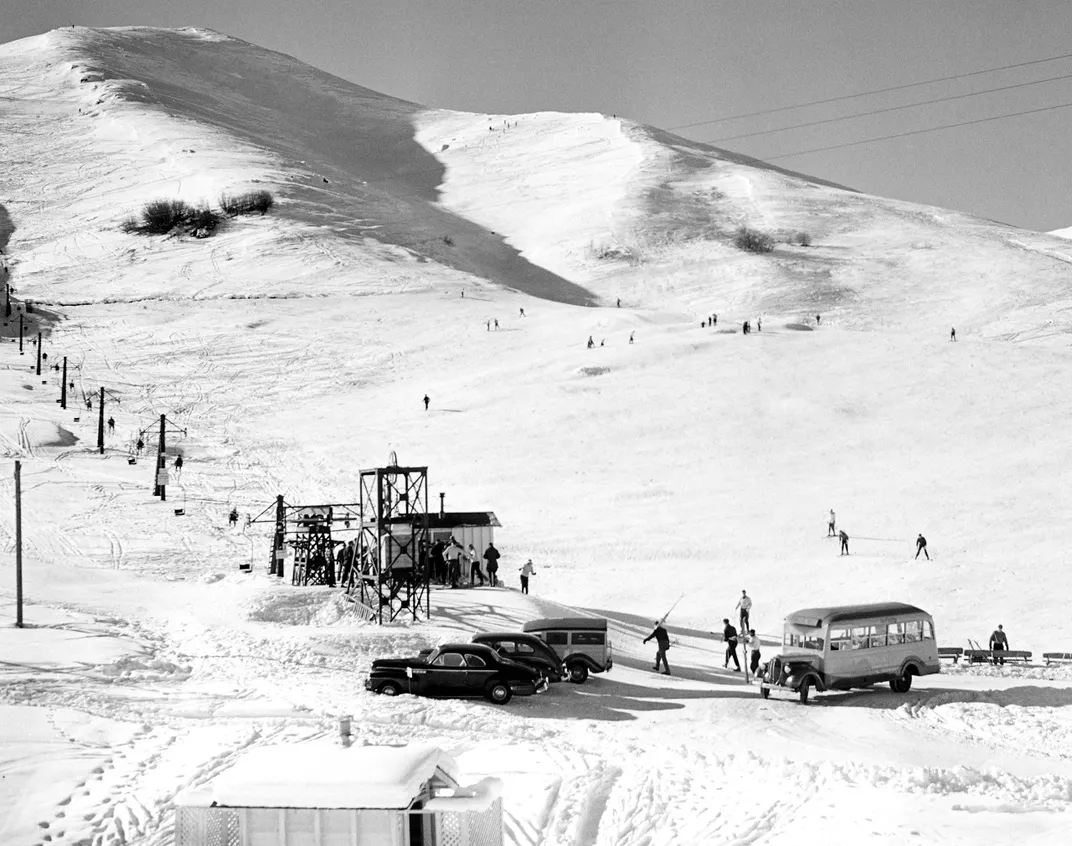
Ski lift technology has advanced since the 1930s. Today’s open-air chairlifts can accommodate as many as eight people per chair and can move thousands of people up the mountain per hour. Though fixed-grip lifts like Curran’s remain in operation at many U.S. resorts, they’ve also given way to higher-tech detachable lifts that can slow down as riders load and unload.
“You could probably draw the analogy to an automobile,” Silva says. “The concepts are pretty much still the same, but the technology is very, very different.”
Born in Omaha in 1903, the sixth of seven children from Irish immigrant parents, Curran passed the state’s engineering exam without college training. He spent his career with Union Pacific, retiring just a year or two before his death in 1968 at the age of 64. The engineer never profited from his invention, according to Ryan, but, in 2001, he was inducted into the U.S. Ski and Snowboard Hall of Fame, 32 years after Harriman also had the honor.
“I have always been very proud of my dad and I always knew he did this special thing,” Ryan says. “I’m glad that he’s gotten some attention for it.”
/https://tf-cmsv2-smithsonianmag-media.s3.amazonaws.com/filer/e4/22/e422692b-0cb0-4a51-ac94-aae26381a96d/ski_chairlift_mobile.jpg)
/https://tf-cmsv2-smithsonianmag-media.s3.amazonaws.com/filer/b9/c3/b9c3525c-7180-4fdd-a1a9-59ce2a93ef61/sv16.jpg)
/https://tf-cmsv2-smithsonianmag-media.s3.amazonaws.com/accounts/headshot/SarahKuta.png)
/https://tf-cmsv2-smithsonianmag-media.s3.amazonaws.com/accounts/headshot/SarahKuta.png)